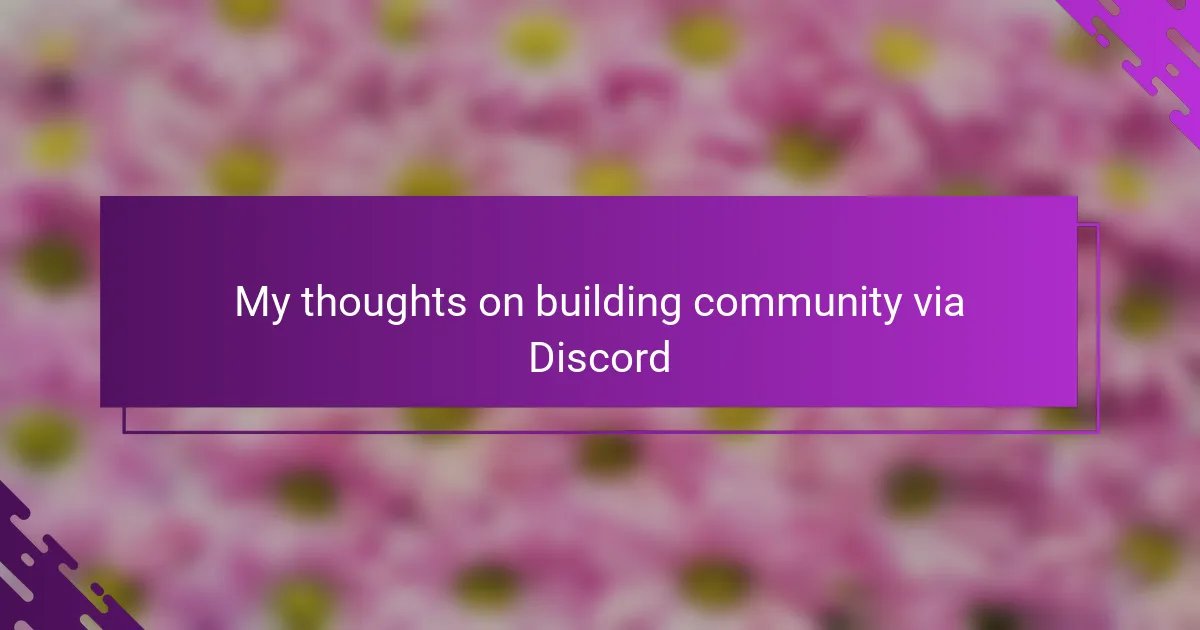Key takeaways
- Discord communities foster real-time, engaging interactions through text, voice, and video, creating a sense of belonging among members.
- Clear structure, customizable roles, and guidelines help maintain organization and a positive environment in Discord servers.
- Active member engagement is crucial; prompting discussions and recognizing contributions can transform casual participants into passionate community members.
- Consistency in activities and user involvement in decision-making enhance community growth and member loyalty.
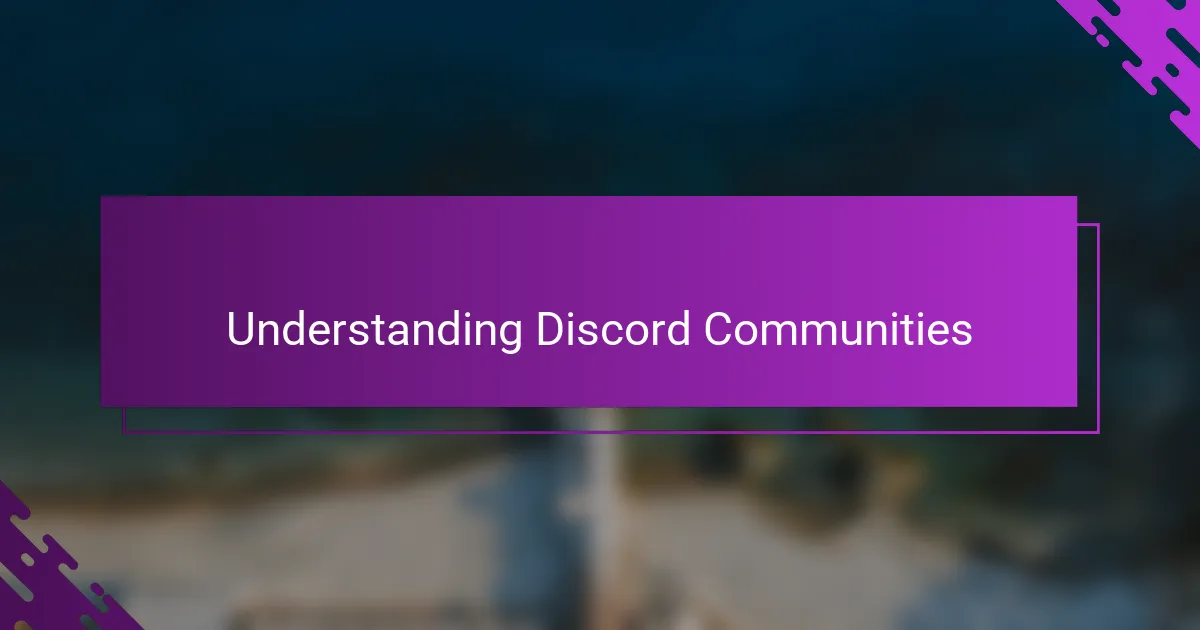
Understanding Discord Communities
When I first joined a Discord community, I was surprised by how different it felt compared to other online forums. The real-time chats and the mix of text, voice, and video created a dynamic atmosphere that made interactions feel immediate and personal. Have you ever experienced a space where conversations flow so naturally it feels like you’re hanging out with friends, even miles apart?
What struck me most was the sense of belonging that often emerges within these servers. People gather around shared interests but also develop connections that go beyond the initial topic. It made me wonder: could this virtual closeness help bridge gaps we often face in real life?
From my experience, Discord communities thrive because of their flexibility and diversity in communication. Whether it’s casual banter or focused discussions, the platform adapts to what members need at the moment, making every interaction feel meaningful. This adaptability is something I believe every community builder should understand deeply.
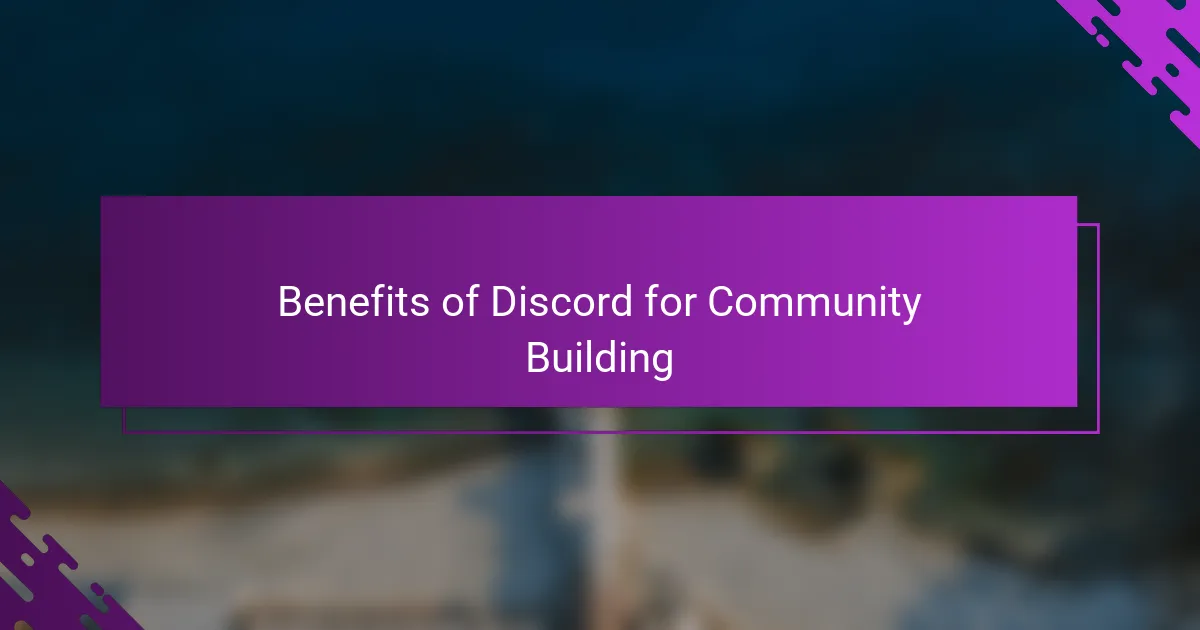
Benefits of Discord for Community Building
One thing I appreciate about Discord is how it fosters real-time interactions. Having instant chats alongside voice and video channels means conversations don’t feel delayed or stiff; they flow naturally. It’s like being in the same room with people, even though we’re scattered across the globe. Doesn’t that immediacy make you feel more connected?
Another benefit is the level of control community builders have with Discord’s customizable roles and permissions. From experience, this helps keep spaces organized and safe without feeling restrictive. When members feel respected and know their contributions matter, the sense of trust and belonging grows organically.
Finally, I’ve noticed how Discord’s ability to host various channels for different topics or moods keeps communities lively and inclusive. People can easily find their niche or just drop by for casual chat, which helps keep engagement high. Have you ever been part of a group where you could choose how to interact depending on your mood? That freedom truly makes a difference.
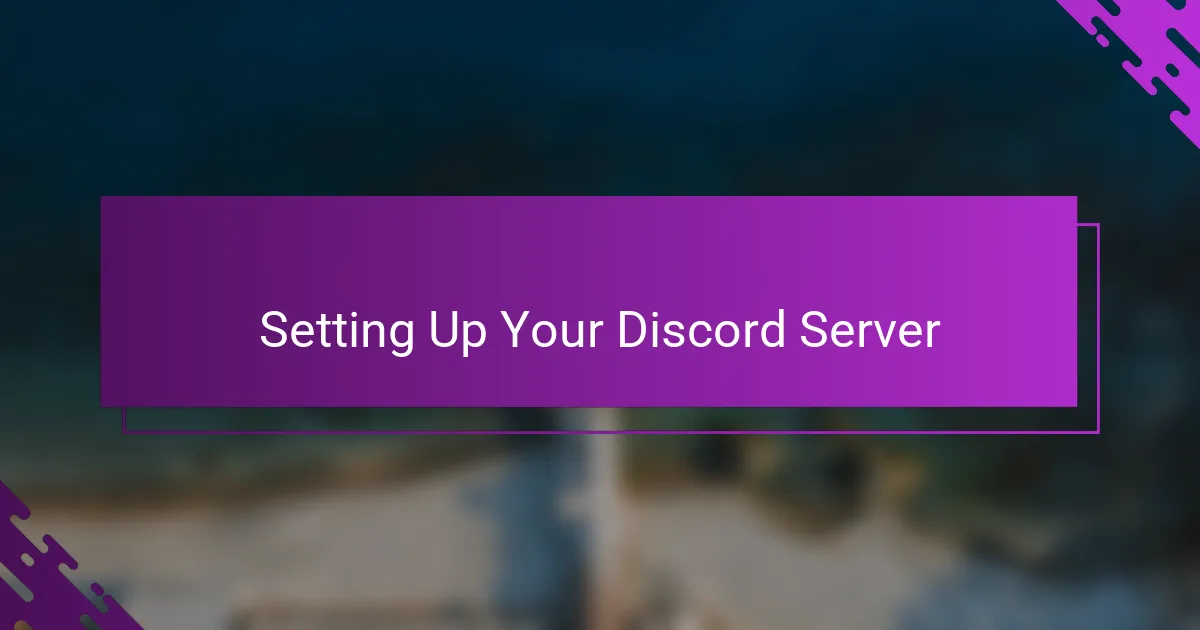
Setting Up Your Discord Server
Getting your Discord server up and running can feel a bit daunting at first, but I found that starting with a clear structure makes all the difference. I usually begin by setting up a few core channels—like a general chat, announcements, and a place for new members to introduce themselves. These basics create a welcoming framework where conversations can start flowing naturally.
One thing that surprised me early on was how much thought I had to put into permissions and roles. At first, I kept things too open, and it quickly became chaotic. Introducing roles not only helped me manage who could post where but also gave members a sense of identity within the community. Have you noticed how having a title or badge can make you feel more invested?
Another tip I’ve learned is to customize your server’s appearance and settings to reflect the vibe you want. Adding a server icon, setting channel topics, and even using emojis helps give your space personality. It’s these little touches that make members feel like they’re in a place that’s truly theirs, not just another generic forum.
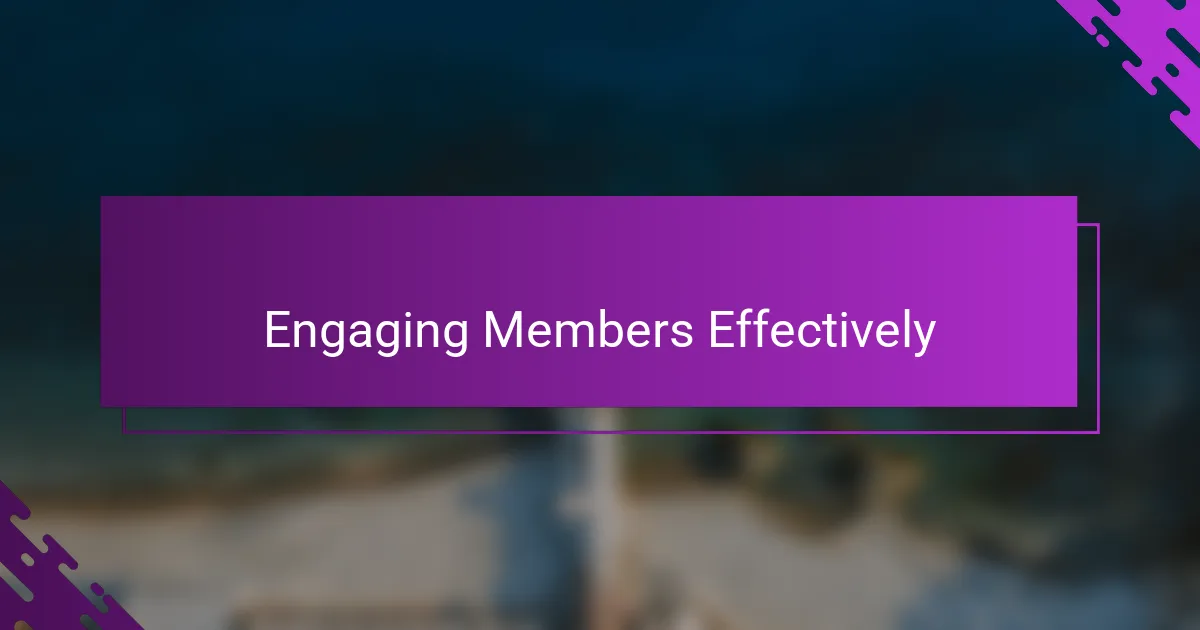
Engaging Members Effectively
Keeping members engaged on Discord requires more than just opening channels and hoping people join the conversation. I’ve found that actively prompting discussions and asking questions generates real momentum—it’s amazing how a simple “What’s everyone’s favorite book this week?” can spark lively debates. Have you ever noticed how people jump in faster when they’re personally invited to share?
Another thing that works for me is balancing activity with space. Sometimes, I wonder if bombarding members with too many notifications might push them away. So I try to create chill zones alongside more active ones, where folks can drop by whenever they’re ready. This way, engagement feels natural rather than forced, and members appreciate having choices.
Finally, I can’t stress enough the power of recognizing contributions. A small shoutout or a fun role upgrade when someone’s been helpful can light up the whole server. It’s those moments of genuine appreciation that transform casual members into passionate community champions. Who doesn’t like feeling seen and valued in a group?
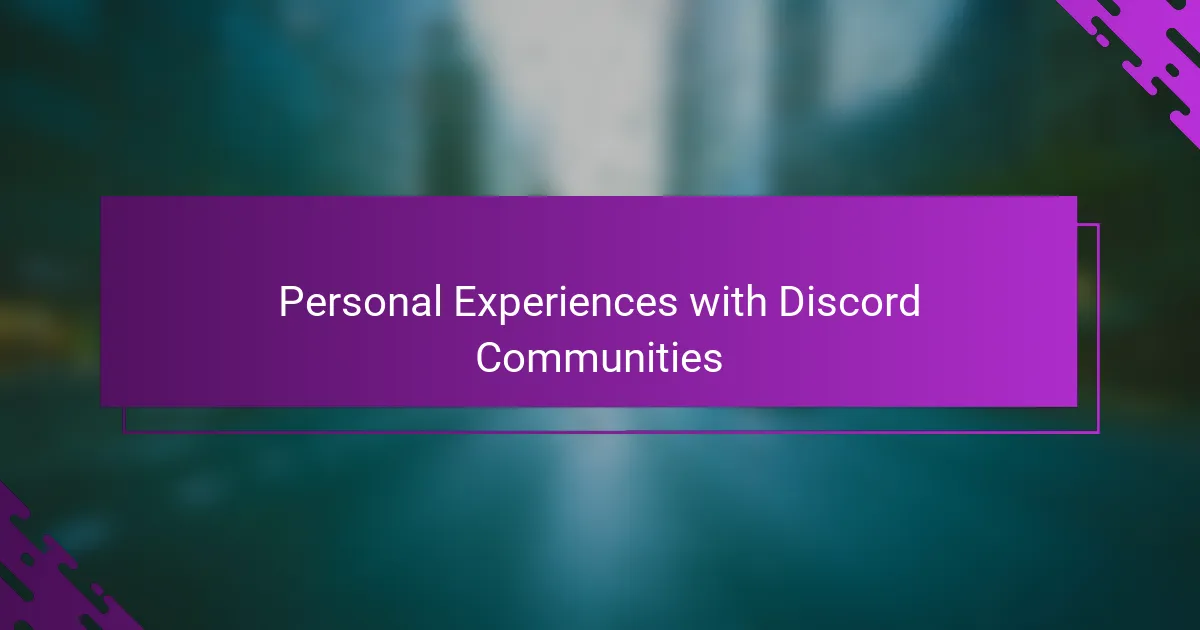
Personal Experiences with Discord Communities
Joining my first Discord community was eye-opening because I quickly realized how welcoming and supportive many members were. I remember feeling hesitant at first, but a simple greeting from a moderator made me feel instantly included—have you ever experienced that warmth that makes virtual strangers feel like old friends?
Over time, I noticed how these communities evolved with the ebb and flow of member interests and moods. One time, during a slow week, a spontaneous voice chat sparked new friendships that lasted well beyond the server. Isn’t it fascinating how digital spaces can foster such genuine connections?
Sometimes, I’ve encountered challenges too, like managing misunderstandings or keeping conversations respectful. Yet, those moments taught me the importance of empathy and clear communication. Have you found that navigating these situations actually strengthens the overall community bond? I certainly have.
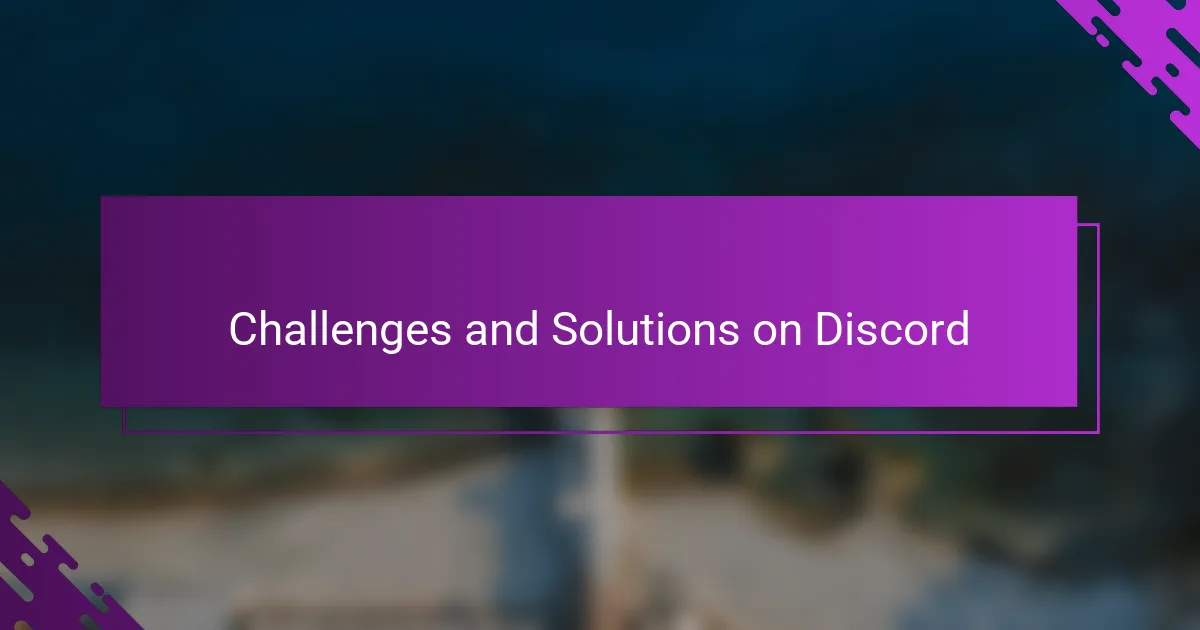
Challenges and Solutions on Discord
One challenge I often face on Discord is handling conflicts before they escalate. I’ve seen how a small misunderstanding in text can quickly spiral, especially when tone is hard to read. To address this, I encourage the use of clear guidelines and active moderation—setting a calm example helps keep things respectful. Have you ever noticed how a single word can change the whole mood of a conversation online?
Another tricky aspect is managing member engagement when the community grows. At times, I’ve felt overwhelmed trying to keep up with discussions across multiple channels. Creating dedicated moderators and using bots to handle routine tasks lightened my load and kept conversations organized. From my experience, dividing responsibilities not only improves flow but also makes members feel their input is valued and managed.
Lastly, balancing privacy with openness can be complicated. I once struggled with deciding how much access new members should have right away; too much freedom sometimes led to spam or off-topic chatter. Establishing tiered roles that unlock gradually based on participation helped me maintain a welcoming yet secure environment. Isn’t it interesting how giving members a path to belong can also protect the community’s vibe?
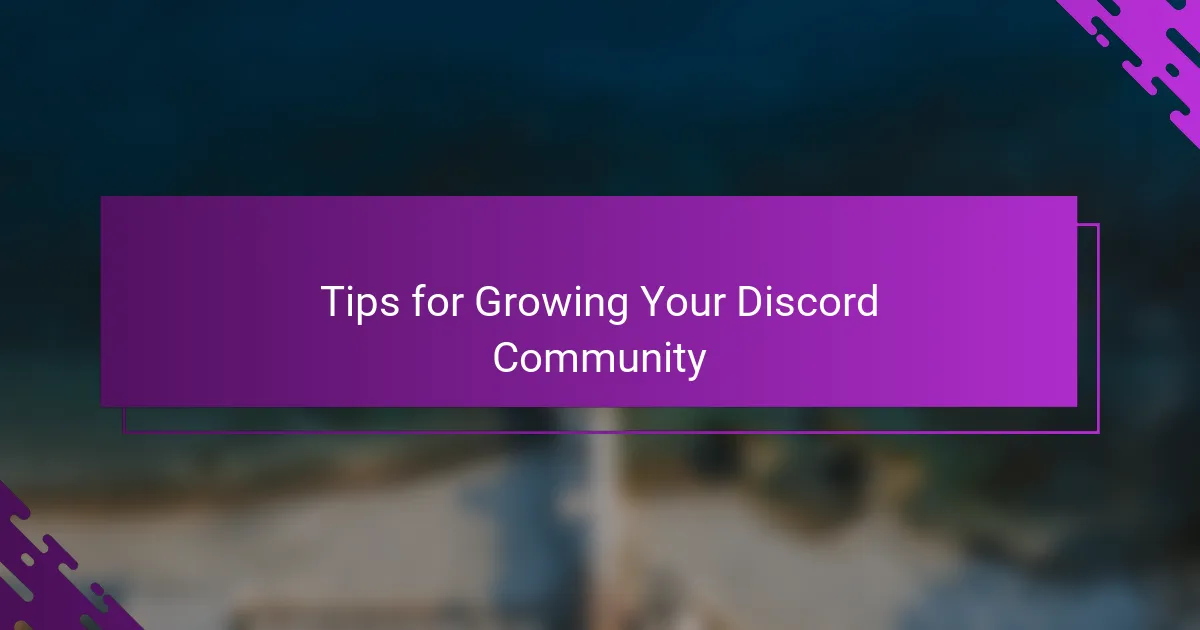
Tips for Growing Your Discord Community
One thing I’ve learned is that consistency really matters when growing a Discord community. Posting regularly, hosting weekly events, or even just greeting newcomers can create a rhythm that keeps people coming back. Have you ever noticed how just showing up consistently makes others more likely to engage? It’s a small effort with a big payoff.
I also find that involving members in decisions or content creation makes a huge difference. When people feel their ideas shape the community, they stick around because it feels like their space too. For example, letting members vote on new channels or events sparked excitement and built stronger bonds in one server I helped run.
Lastly, leveraging Discord’s tools can supercharge growth. I use bots to welcome new members, automate simple tasks, and even run fun games that encourage participation. It might sound techy, but these little helpers take some pressure off and make the community feel more alive. Isn’t it satisfying when technology actually brings people closer?
